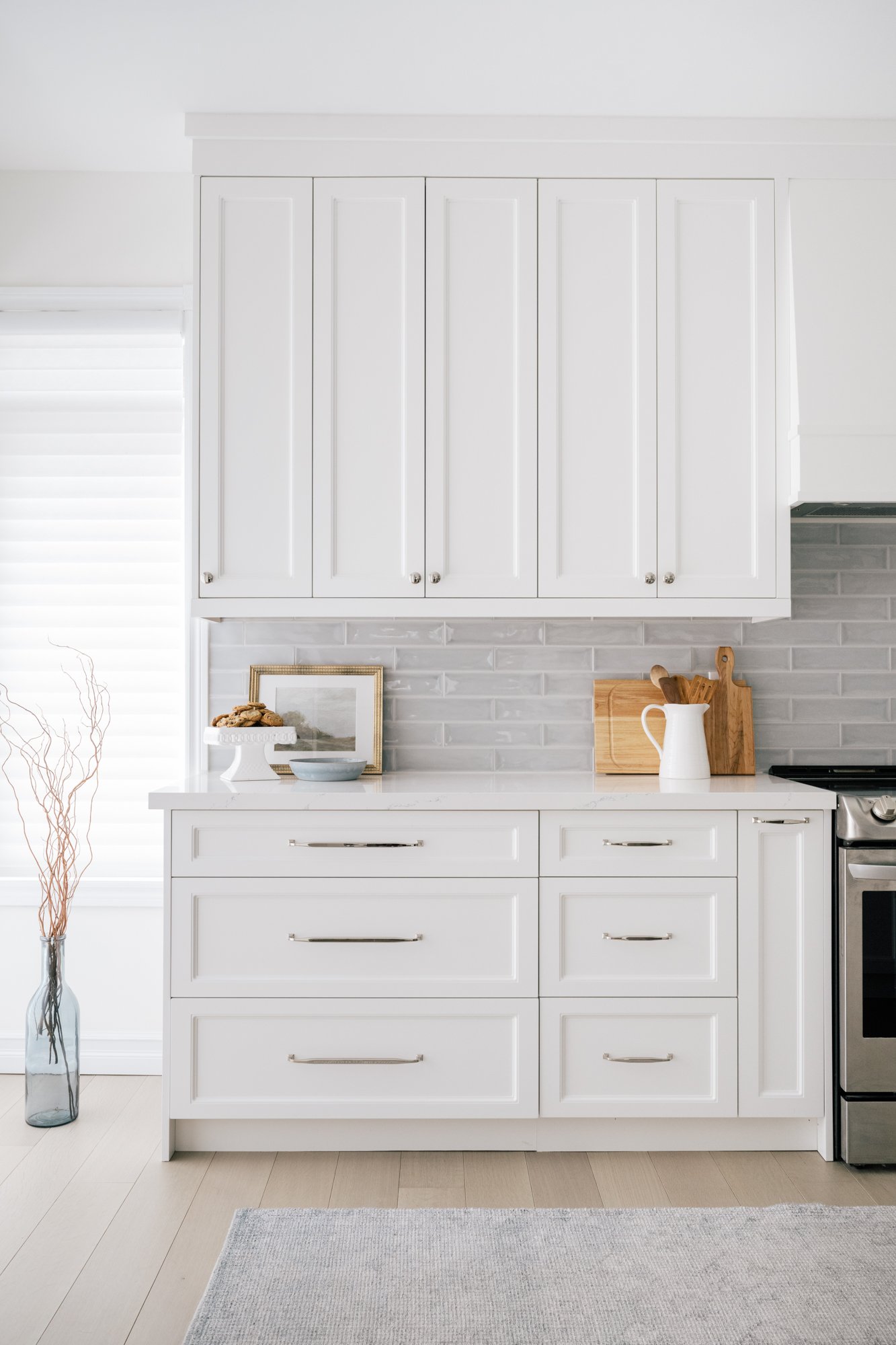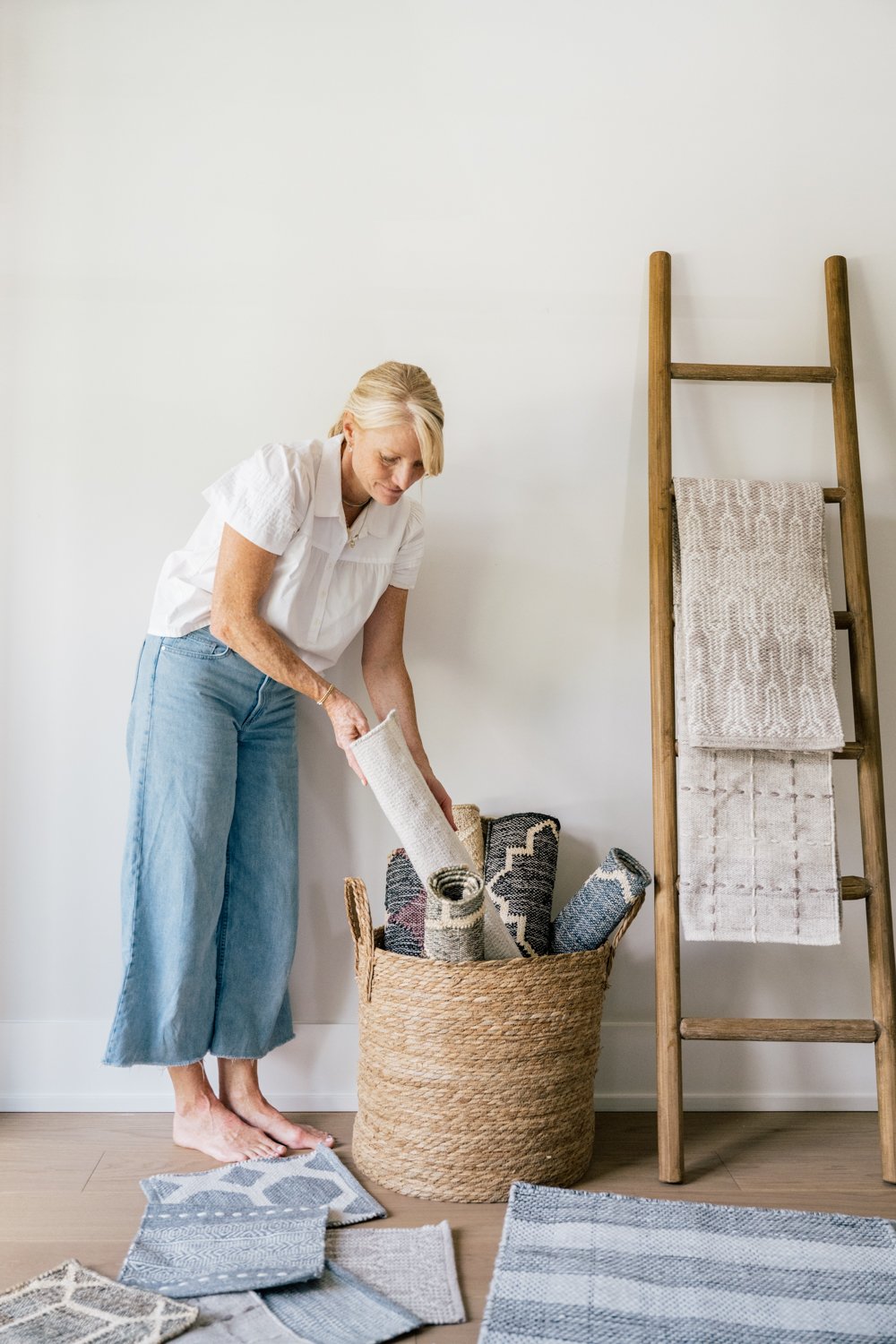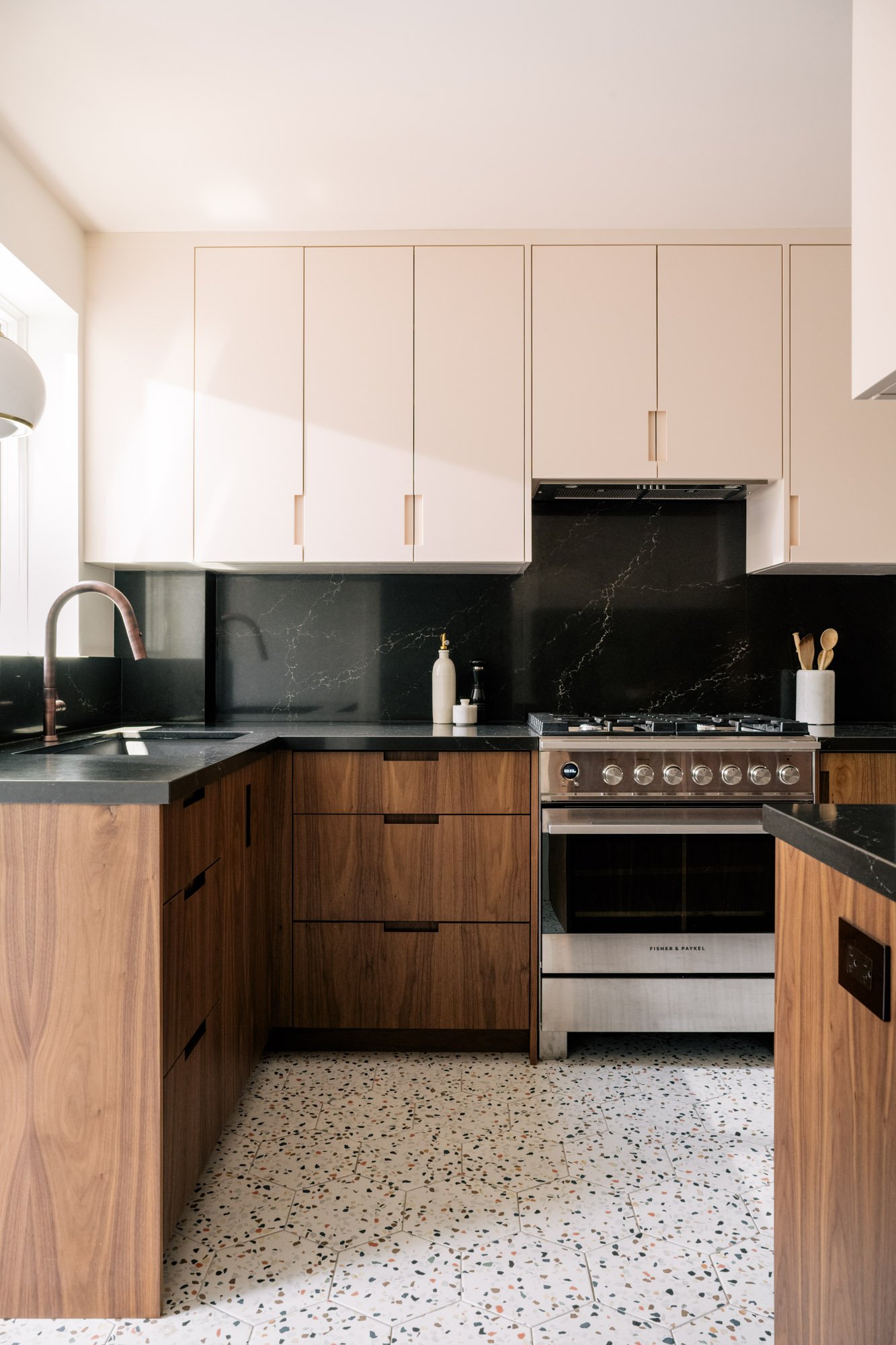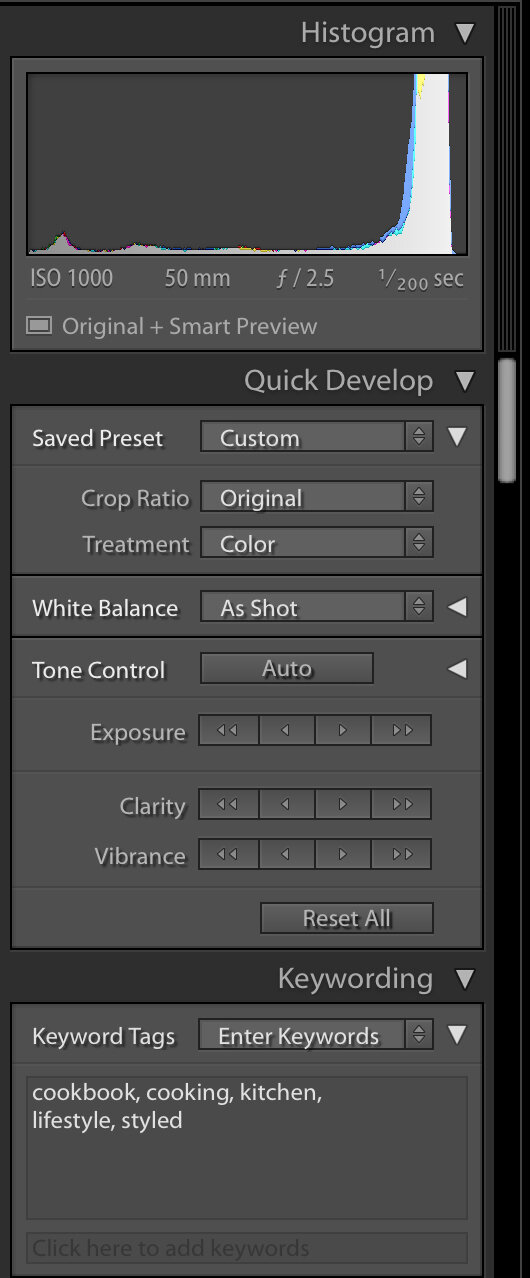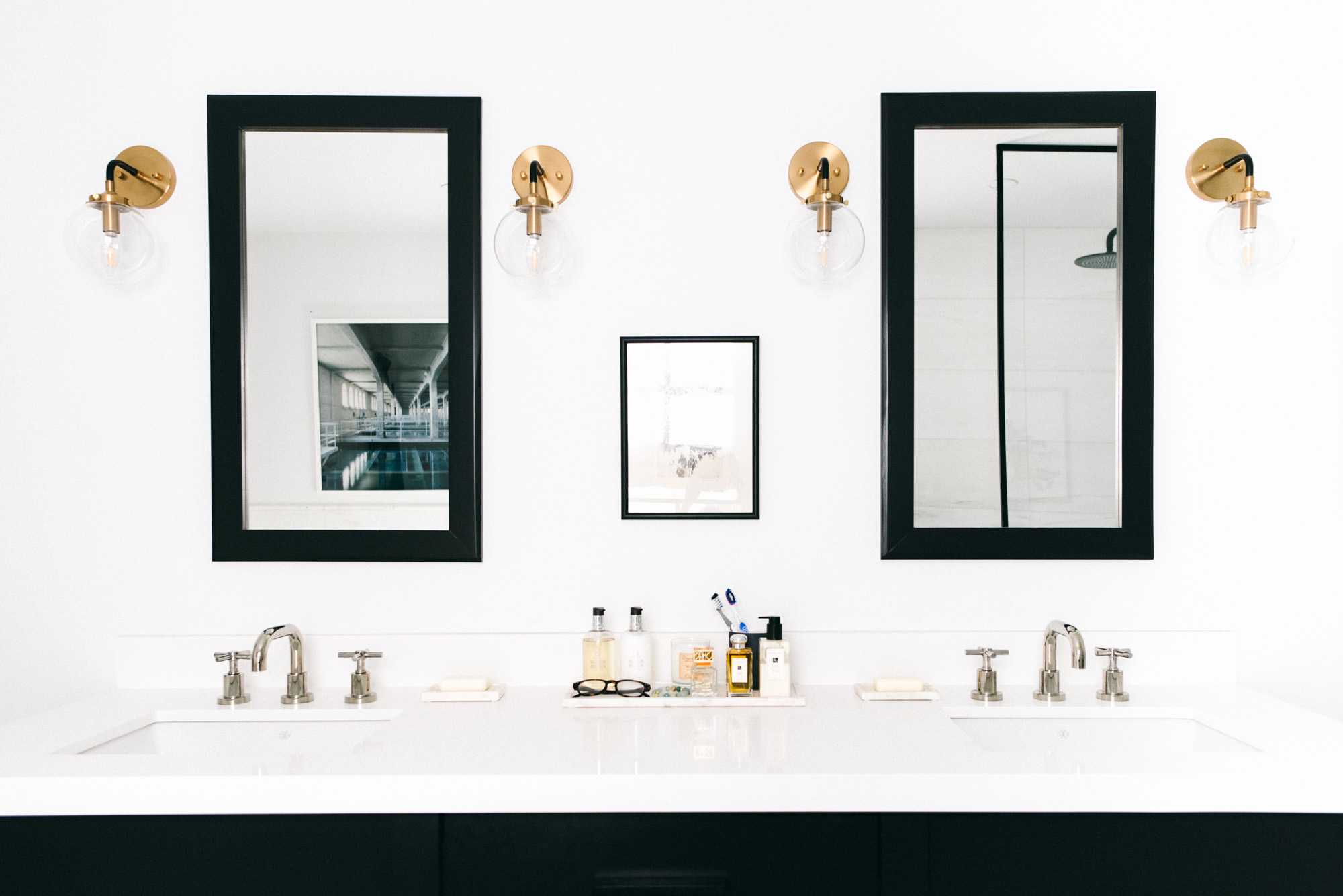This room wasn’t being used to its fullest so Christine of Christine Roberts Design designed it into a breakfast room with custom built-in storage, new flooring, and a breakfast bar in the corner.
interior design
How to Photograph Interiors - Part 3: Post-Processing
Originally published December 13, 2019
Updated May 9, 2024
If you haven’t read the first 2 parts in the How to Photograph Interiors series, you can go back and read them first:
Part 1: Preparation
Part 2: Photography
Part 3: Post-Processing
Now that we’ve covered How to Prepare for an Interior Shoot in Part 1 and The Photoshoot in Part 2, we can move onto the post-production process.
One of the best ways to keep your client’s images safe (so that you actually have photos to edit and deliver) is to be over-prepared. When packing your gear for a shoot, consider bringing a portable external hard drive and laptop with you so you can backup the RAW files immediately. This ensures that you’ll have a copy in case anything happens such as lost or corrupt memory cards, water damage, etc. and these things happen more often than you’d expect.
3-2-1 Backup Strategy
As a general guideline, you can follow the 3-2-1 Backup Strategy:
Make 3 copies of the RAW files, 2 on separate hard drives and 1 offsite (eg. uploaded to the cloud or stored safely at another physical location like a trusted family or friend’s place).
Once you’ve made these backups, you can now start editing. We’ll keep this editing process minimal (ie. without using presets) so that you can understand the basics.
1. Organize your photos
Everyone has their own way of filing their photos. Once you’ve decided on what works best for you, stick to it. This is how I organize them so feel free to change it according to your needs.
After every shoot, I organize the photos by year and then by date. Here’s the hierarchy of folders on my external SSD external hard drive:
> Photography - Work
> 2024
> yyyy-mm-dd Interior - Designer’s Name (Address of Location) - Raw photos
> Final - Final high-res JPG photos to be delivered
> Web - A few selected web-resolution JPG photos to be used on portfolio/social media
(This is optional but it’s useful so you have that new work ready to update your portfolio/social)
2a. Culling
If you shoot weddings or events where you shoot a few hundred photos, it’s best to cull the set first. This means that you take a first pass through them and rate the photos to save you time when you’re actually editing.
During this process, you’re also removing the photos that are unusable (ie. out of focus, accidental shots, people caught mid-blink, etc.). Photo Mechanic is a great tool for culling because it renders previews quicker than Lightroom and has a star and colour ratings.
Develop your own system of rating but here’s an example that you can use when culling in Photo Mechanic or Lightroom:
5 stars = Excellent photo that must be delivered to the client
4 stars = Great photo technically and creatively, but not a top-pick
3 stars = Good photo technically, but not very creative and doesn’t add to the story/collection
2 stars = Ok photo, but only if needed to fill in gaps in the collection
1 star = Unusable, to delete.
Keyboard shortcut
You can also use the Pick/Reject system in Lightroom by pressing p on a photo to flag it as a pick and x to reject it.
2b. Import photos into Adobe Lightroom
Note: I have one Adobe Lightroom catalogue for all my work projects for the year. Some photographers choose to start a new catalogue for every shoot, which is helpful if each shoot has hundreds or thousands of photos. That helps your computer cut down on the time it takes to load the catalogue.
If you’re culling in Lightroom, drag all the RAW files from its folder into the Library module and start the process from there. If you’ve already culled your photos, select the RAW files you want to edit and drag them from the folder into the Library module.
Another way to do it is to go to File > Import Photos and Videos. Then navigate to the RAW files’ folder in the left panel:
As you’re importing, add relevant keywords in the File Handling/Apply During Import panel on the right. Using metadata is important in case you want to search for a specific photo in the future.
When the photos are imported, your Library will look like this (the photos have already been culled and flagged as Picked):
3. Develop Module
Once the photos are in the library, we can edit them. Here are a few things I’ll apply to each photo (either individually or as a batch):
Profile Correction
Check off “Enable Profile Correction” on the first image and sync this setting with all the photos. It’s located in the Lens Correction panel on the right (you may need to expand the panel). This ensures that every photo has the correct camera profile applied. Different cameras and lenses render photos differently so it’s best to turn on this correction.
Transform
With each photo, you may need to use the Auto or Vertical if the photo wasn’t level during the shoot. Sometimes, you’ll also need to manually adjust it using the sliders. Use the horizon lines in the photo and the grid in Lightroom to make sure walls are straight and floors are perpendicular.
Basic Panel
You can make most of your light edits here and deliver great photos. While you are being hired for your style and work, keep in mind the current client and the audience (who may very well include potential clients) to make sure the photos convey the right message.
Correct the white balance so that it represents the room the way you want the viewer to see it. In interior photography, I aim to keep the colours true to life and I check the before and after of the photo (using the \ key) often to do this. Depending on the interior designer, they may not mind stylized post-processing if it gives the room a specific look and feel that they want.
If the highlights in the photo are blown out, you may be able to recover some of the details by lowering the Highlights or Exposure sliders into the negatives.
To add pop to the photo, increase the Contrast bit by bit.
Tip! Watch out for negative impacts on the quality of the image when making adjustments. Be sure to compare the before and after throughout the editing process. Adjust the slider back and forth and dial it back if the effect becomes distracting (eg. too much contrast, loss of important details like highlights or shadows, colours are no longer represented accurately).
Keyboard shortcut: Toggle the before and after by pressing the \ key.
After you’re happy with your edits to one photo, you can apply these same settings to other photos in the batch that have a similar lighting and colour situation. This will save you some time, but don’t forget to review each photo to make sure they’re consistent.
When the entire set is finished, filter the photos to make sure only your final selects are shown. Select them all and go to File > Export. Go through each section and make changes as necessary. Here are some examples:
Save the exported photos to a specific folder.
Custom rename the files according to the shoot and client.
Change the quality and resolution of the photos according to the client and use.
After you’ve exported and delivered the photos to your client, make backups of your RAW and JPG files to external locations (external hard drives, cloud storage, etc.). It’s useful to have them ready to show as portfolio work.
Thank you for following along in this How to Photograph Interiors series. I hope this has been helpful!
How to Photograph Interiors (Part 2): The Photoshoot
Originally published: Sept 16, 2019
Updated May 9, 2024
Welcome to the second instalment of How to Photograph Interiors. In Part 1 of the series, I shared a checklist on how to prepare for a shoot. Once you’ve gone through that list, you’re now ready to shoot.
Photographed for Leann Ban Interiors
How to Photograph Interiors
Equipment
It’s important to use the appropriate equipment for a professional photography assignment, but I want to emphasize that it’s crucial to learn the proper technique (eg. lighting and composition) first before investing in expensive gear. The best equipment can’t save a photo if it doesn’t show what you and your client want.
Camera
With that said, a full-frame camera is recommended because it has a larger sensor than a crop sensor camera. Because of this, it will perform better in low-light situations. It’ll also give your camera the ability to use lenses to their full potential. In this article, we’ll be referring to a full-frame camera and FX lenses.
Photographed for Oak and Isaac/Kelly Johnson
Lens
For wedding and lifestyle photography, I used prime lenses (ie. fixed focal length) so they don’t zoom in or out. I prefer prime lenses over zoom lenses for that type of work because of the range of work I shoot. The smaller size and weight of these lenses plus their wider apertures make them better suited for my style of photography.
However, for interior photography, I’ve switched to a 24-70mm lens as my main lens so I don’t have to switch focal lengths often.
Here are some of the common lenses used in interior photography:
Wide Lens
Use a wide lens with a focal length of 24mm to capture the entire room. For example, a 24mm or 24-70mm lens (used at 24mm).
You could use an even wider lens such as the 16-35mm in some situations, but I’d avoid an ultra-wide lens like a 12-24mm. If you must use it, use it sparingly and be aware of distortion towards the corners of the photo. It’ll stretch the room and create an unwanted warping effect. In that case, you may need to adjust the perspective or crop the photo in post-processing to remove the stretched part of the image.
Medium Lens
A 35mm lens is one of my go-to lenses because it captures the scene with a similar focal length to the human eye. This gives the viewer an accurate idea of what they would see if they were in the room. The 35mm doesn’t create a lot of distortion either, which is a big advantage over ultra-wide lenses.
For mid-range details, the 50mm lens is great for the job. It’s not too wide and not too tight so you can focus on an area while still capturing the environment for context.
Long Lens
For detail shots, an 85mm or 24-70mm (used at 70mm) is useful to create vignettes within a room. They allow you to highlight specific objects or features of the room.
Tilt-Shift Lens
If you’re serious about interior and architectural photography, consider investing in a specialty tilt-shift lens with a focal length of 19mm or 24mm. A tilt-shift lens has the ability to both tilt and shift which allows the camera body to remain level while the lens changes the focusing plane. For example, if you’re photographing a tall building, the camera does not need to point up or down to capture the entire building because the lens will correct that angle.
Tripod
A sturdy tripod is highly recommended, especially in low-light situations where you may need to use a slower shutter (eg. 1/80s, 1/30s or slower, etc.) to keep the camera in the same position when exposure bracketing. It will also save your back from having to crouch or bend down constantly to get a shot.
Tether Cable
Shooting tethered is beneficial for you and your client because the screen on the back of your camera is small. These small details can go unnoticed at first glance. With the camera tethered to a laptop, you’re able to zoom into different areas of the image to see if you need to make any changes before moving on.
Photographed for The Kwendy Home
Camera Settings
File Format
Shoot in RAW format (instead of JPG or other formats) so that the files are uncompressed versions. Depending on the camera brand, they may have a different file extension like .NEF. .CR2, .ARW. These RAW files give you the most flexibility and control when capturing a wide range of lighting and when editing in post-processing.
ISO
Generally, you want to maintain a low ISO to prevent grain (also known as digital noise) from appearing in the image. The ideal ISO is between 100-400, but cameras keep improving so even if you have to bump up your ISO, your photo should still be ok. If there isn’t enough light, you’ll have to make adjustments to either your shutter speed, aperture or introduce artificial light.
Aperture
For shots of large spaces with a lot of depth, use a smaller aperture so that everything from the foreground to the background is in focus. An aperture in the range of f8-f11 is generally good for a space with a lot of depth, but you may need to use a higher aperture depending on how much you’re photographing.
When shooting details and vignettes, you can use a wider aperture (around f2.0-f3.5) to create bokeh in the image. Again, this is a general guideline and you’ll have to adjust according to what you’re shooting.
Shutter Speed
Out of the 3 main camera settings we talk about (ISO, aperture, shutter speed) your shutter speed is the most flexible if you have a tripod. If you’re in a low-light situation and your ISO is at 400 and your aperture is at f5.6 already, you can slow your shutter speed to allow more natural light into the camera. In those situations, it’s important to use a tripod and the camera’s timer or a remote trigger to prevent camera shake.
Note: If you’re using flash or strobes, your shutter speed won’t affect how much artificial light your camera lets in.
White Balance
Most of the time, the camera’s auto white balance does a good job of capturing the overall colour temperature. However, if the room has colourful walls, wallpaper or furniture, they might reflect those colours back into the room. This will affect the white balance. For example, if the wall is green, it could cause the room to have a slightly green hue in the photo. To correct this, first use a grey card to set the white balance in your camera or adjust the white balance temperature in Kelvin. The white balance can also be corrected in post-processing if you don’t have a grey card.
Photographed for Jennifer McLean
Lighting
Time of Day
Find out which direction each room faces and pick a time of day where the light will be even in that room. For north and south-facing rooms, choose a time when there is the most light. For east and west-facing rooms, avoid shooting when the sun is shining directly into the room, which can cause glare and hot spots on surfaces. I generally shoot between 10am-2pm if I want even lighting. In some cases, I may shoot when there is more light streaming in through the windows if I’m going for a specific look.
Exterior photos can be taken outside of those times, at sunrise or sunset, when the sun is lower on the horizon, creating a nice glow without harsh light.
Keep in mind that these times will change slightly depending on the season and location as the sun will rise and set differently. If possible, scout the location ahead of time or ask the homeowner to take a few photos on their phone at different times of the day so you know what you’re working with.
Natural Light v Artificial Light
There are different views on this, but ultimately it depends on the style and look that you and the client are going for.
Natural light is great for interior photography and is often used to feature a room during the day. Turn off lamps or overhead lights to avoid mixed lighting, which can cast colours and shadows. If a certain spot in the room is darker than you’d like, try using a large reflector to bounce light. On the other hand, if there is too much light coming in from one area off-camera, use a large diffuser to soften the light. These reflectors can be found on Amazon or used from other photographers. They’re a powerful and affordable way to shape light in many situations.
When you need to use artificial light, a flash unit with a shoot-through umbrella can help fill in the shadows. Make sure the flash doesn’t overpower the rest of the room. You don’t want the artificial light to be a distraction and take the attention away from the room.
It may make sense to turn on a lamp or overhead lights if it adds to the ambiance of the room. But be sure to keep the lighting consistent if you go that route.
Bracketing
The amount of light within a room will vary. The windows may be blown out while a corner will be dark. This is where bracketing can even out the light so that every part of the room is exposed properly. Bracketing is when you take a minimum of 3 photos at different exposures and merge them in post-processing.
First, take a photo that is exposed for somewhere in the middle. That means that the meter in the camera is in the centre. Then take a photo that is underexposed. Usually, this is where you properly expose for the windows to get the details back. For this shot, don't worry about the rest of the room being too dark. Then take an overexposed photo, where you properly expose for the darker areas of the room. In this shot, the bright areas of the room will likely be blown out.
We’ll talk about what to do with these photos in the post-processing part of this series.
Photographed for Leann Ban Interiors
Composition
Hero Shot
Start with the wide establishing shot by picking out one perspective that will be your hero shot. This is the shot that sets the scene and is the best representation of the room. If the space is huge, there might be two hero shots from different angles.
Make sure to take your time with this shot. Walk around to all corners of the room to select the best angle. Remember that what you see in person can look different in the camera so use your viewfinder or live view.
Watch out for items that are misaligned or appear to be overlapping another object. Refer to the checklist in Part 1 of this series.
Photographed for Vintage and Teak
Angle
The 2 most common wide shots are:
Shoot the entire room with your camera parallel to the far wall and
Shoot with the corner of the room in your frame.
Aside from detail and vignette shots, photos of a room should show at least some of the floor in the frame.
Shoot from an approximately mid-level height of the room or commonly referred to as waist level. This depends on the room though. For the living room, shoot from waist height will work well, but you may need to shoot a bit higher in the kitchen because of the countertop. The idea is that you want to capture the height of the room evenly without pointing the camera up or down into a room. The grid in your camera’s viewfinder or live view screen should be parallel to the walls and perpendicular to the ground and ceiling.
Use the level on the tripod or get a small hotshoe bubble level to ensure that the camera isn’t crooked. This will save you a lot of time in post-processing.
If you’re shooting a room with a table (eg. dining table, coffee table, kitchen countertop), make sure the camera is not shooting below the horizon of that surface, otherwise, the focus will be on what’s under the table.
Take a variety of landscape (horizontal) and portrait (vertical) shots so that you have options for websites, social media channels or print publications. Use objects, furniture and walls to guide the viewer’s eye to what you want them to see.
Use symmetry and negative space in your composition.
As mentioned in Part 1, interior photography showcases the room and its design as opposed to the scale of the space so you don’t always have to capture everything in the room at one time.
Details
Once the overview shots are done, move in to take some mid-range and detail photos, also known as vignettes. Focus on a smaller area of the room (eg. shelf, fireplace, stove, side table) and then followed by details (eg. hardware, decor). Create a different feel by taking the shot from a different angle.
Focus
Choose your subject in the room to focus the camera on, such as the couch, bed or dining table. Make sure it’s completely in focus before taking the photo. When the camera is set to autofocus, look for an autofocus indicator light in the viewfinder or screen (usually a small solid circle). This indicator will light up when properly focussed on the subject.
Reflections
As you’re shooting, look out for reflective surfaces so that you or your camera gear don’t appear in a mirror or a shiny object.
Review
After taking the standard photos of the room, go over your photos in-camera to make sure you’ve taken enough to fully capture the space before moving on. The next step in your photo shoot - Post-Processing - will be covered in part 3 of the How to Photograph Interiors series!
Photographed for Jennifer McLean
How to photograph interiors (Part 1): Six tips on preparing a space
Updated May 7, 2024
So you’ve styled your room beautifully and are eager to have professional photos taken. I’ve had the pleasure of capturing amazing homes, but before I even step foot into the space, I recommend these six ways to prepare to ensure the best representation of the room.
How to photograph interiors
Photographed for Oak and Isaac
1. Declutter
It sounds obvious, but it needs to be said. While we want to show off the room’s personality, we don’t want to take the focus away from it as a whole. We want the viewer to feel invited and welcomed without feeling overwhelmed visually.
Remove items that are a distraction such as personal photos or used towels, toiletries, etc. that aren’t necessary to convey the feel of the space.
2. Clean surfaces
Mirrors and windows: Wipe with a microfiber cloth to remove all streaks and dust.
Floors: Be sure to vacuum, Swiffer and mop the floor, especially in the corners and under furniture. Even a thin layer of dust and hair can stick out like a sore thumb.
Tables, coffee tables and shelves: Dust the surface as well as items on it.
Hardware and appliances: Remove water stains and finger prints from faucets, refrigerator, etc.
Screens: Wipe fingerprints and dust off the TV and computer/laptop. Smudges will show up on those dark glossy screens.
Photographed for The Kwendy Home
3. Hide extraneous wires and cords
Tuck cords and cables away from sight by wrapping them or temporarily taping them behind furniture.
Photographed for The Kwendy Home
4. Straighten and align furniture, mirrors, artwork
Use walls and floors to help align furniture, mirrors and artwork to surroundings. Make sure objects are level and evenly spaced.
Photographed for 1smallspace
5. Fabrics
Iron or steam out fabrics like bedding, throw blankets, curtains and pillowcases so they aren’t wrinkled.
Fold and tuck in bedsheets and linens. Remember to pull the sheets taut. Watch the corners and edges to make sure the covers and throws are evenly spread out and nothing unwanted is showing. We want the bed to look fresh and inviting.
If pillows are looking a little deflated, fluff them by lightly punching in the sides. You can then karate chop it down the middle to give it dimension, but keep in mind that may not work for pillows without feathers.
Photographed for The Kwendy Home
6. Style with Intention
Styling is a whole topic on its own, but here are a few small but effective ways to put the finishing touches on any room.
Every piece should be added intentionally. Add personality to the room, but make sure that they work together. Use your style and colour palette as your guide.
Play around with the different heights of your furniture and decor to add dimension. Just be aware that they aren’t too drastic (eg. Tall table lamp and tiny succulent) or else some items will get lost in the final photo.
You can also liven up the room with plant life:
Fresh flowers (Baby’s breath and hydrangeas are simple, popular options)
House plants (Play around with small to large plants in different areas of the room)
Leaves and sprigs (Bundles of eucalyptus leaves and lavender are a nice touch)
Interior: Basement kitchenette and bar lounge (Kē Design Collective)
Here’s an idea for your basement: Turn it into your very own underground bar lounge for the adults or a kitchenette to bake cookies with the kids.
Read More







